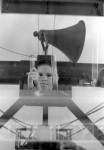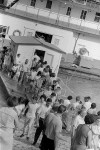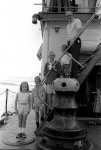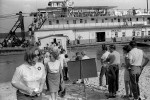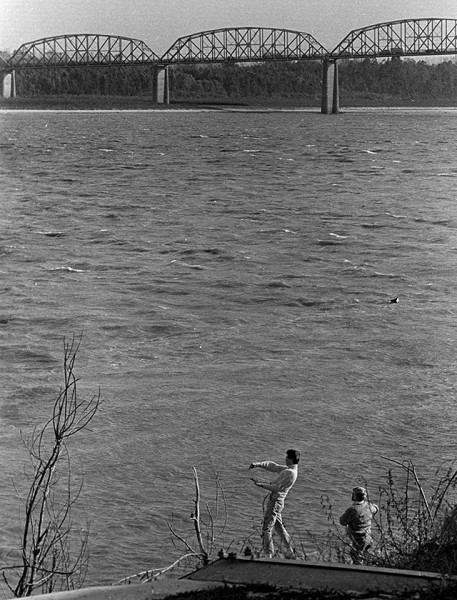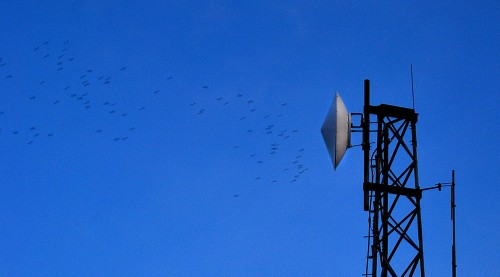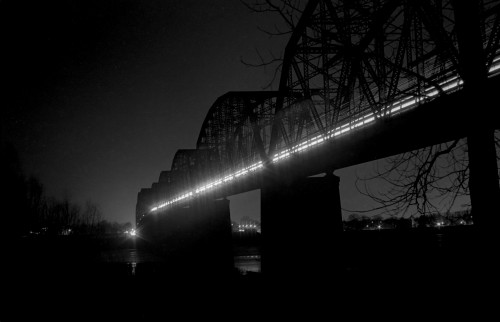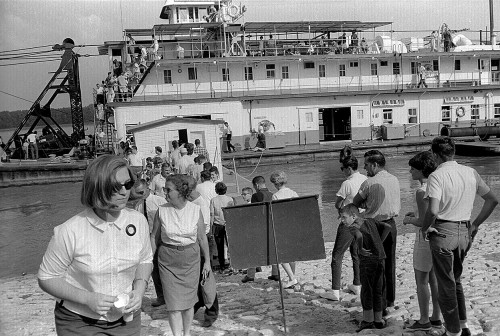 Huge crowds turned out to tour the Corps of Engineers Dredge Ste. Genevieve in the middle 1960s. I tried to find the story associated with the photos, but came up blank. The “Genny,” as she was called by the men who worked aboard her for more than half a century, was built in 1932 by Dravo Corp. at Neville Island in the Ohio River at Pittsburgh.
Huge crowds turned out to tour the Corps of Engineers Dredge Ste. Genevieve in the middle 1960s. I tried to find the story associated with the photos, but came up blank. The “Genny,” as she was called by the men who worked aboard her for more than half a century, was built in 1932 by Dravo Corp. at Neville Island in the Ohio River at Pittsburgh.
Last stern-wheeler
 The Ste. Genevieve, the last steam-powered stern-wheeler cutterhead dredge to be operated by the Corps, was retired in 1984. A story by David Hente June 18, 1994, tells of its sad end. Or, at least part of it. After it was retired, it spent several years in Davenport, Ia., where it was supposed to be turned into a museum. That never happened.
The Ste. Genevieve, the last steam-powered stern-wheeler cutterhead dredge to be operated by the Corps, was retired in 1984. A story by David Hente June 18, 1994, tells of its sad end. Or, at least part of it. After it was retired, it spent several years in Davenport, Ia., where it was supposed to be turned into a museum. That never happened.
Donated to Marine Learning Institute
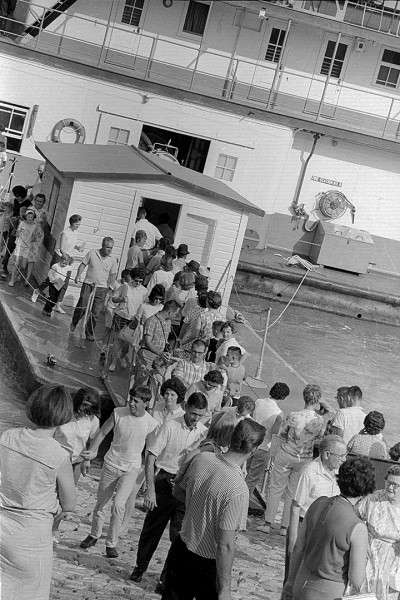 In 1992, the General Services Administration donated the craft to the Marine Learning Institute, which had offices in Missouri and Maryland. The institute wanted to turn the boat into a floating museum and educational center on the banks of the Missouri River at St. Charles. That didn’t happen, either.
In 1992, the General Services Administration donated the craft to the Marine Learning Institute, which had offices in Missouri and Maryland. The institute wanted to turn the boat into a floating museum and educational center on the banks of the Missouri River at St. Charles. That didn’t happen, either.
The next plan was to put it at the corps’ environmental demonstration area on the Mississippi River at a former marina at West Alton, Ill. That also didn’t come to pass.
Sank in 1992 near Cairo
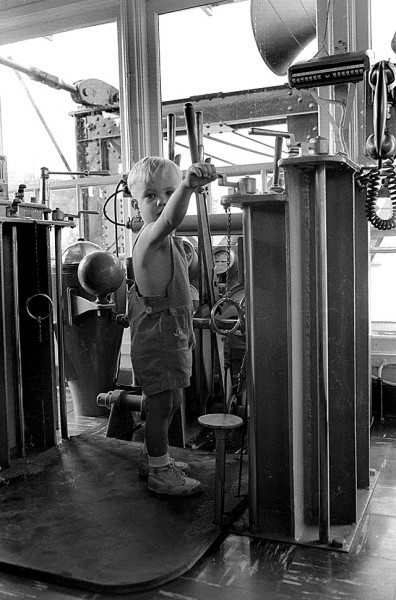
While the institute was trying to find a permanent home for the dredge, they received an invitation from the city of Cincinnati to bring the dredge to its Tall Stacks ’92 festival on the Ohio River. It was towed to a staging area below Cairo to wait for a ride up the Ohio. While it was there, it sank on Oct. 1, 1992. After spending 31 days on the river bottom, it was raised, emergency repairs were made to its hull and it was towed to the Missouri Dry Dock and Repair Service in Cape for permanent repairs.
Repairs and wrangling
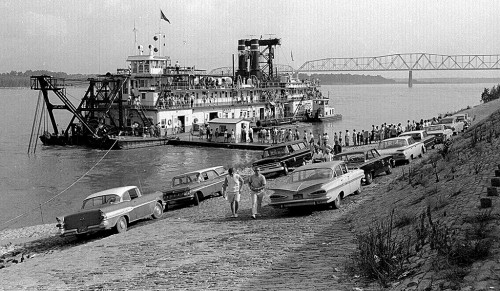 After the Ste. Genevieve made it to Cape, there was a two-month delay, but the repairs were finally made to its hull in 1993. The shipyard placed a lien on the boat because the Marine Institute didn’t have enough money to pay for the repairs. The repaired dredge was put back into the water and remained docked in the shipyard while the legal wrangling went on through the rest of 1993 and early 1994.
After the Ste. Genevieve made it to Cape, there was a two-month delay, but the repairs were finally made to its hull in 1993. The shipyard placed a lien on the boat because the Marine Institute didn’t have enough money to pay for the repairs. The repaired dredge was put back into the water and remained docked in the shipyard while the legal wrangling went on through the rest of 1993 and early 1994.
Sank again in March 1994
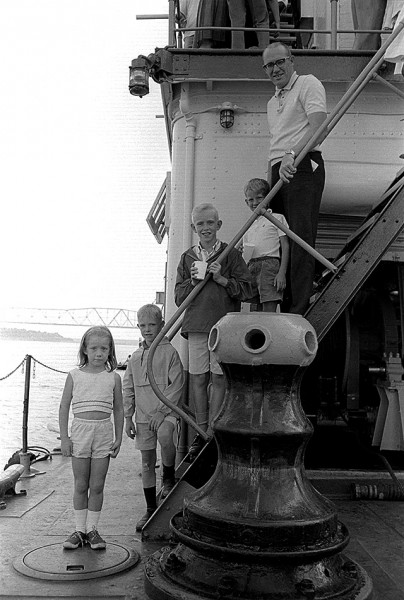 On March 10, 1994, for reasons unknown, the Ste. Genevieve ended up on the river bottom again. That brought about even more legal squabbling. The Missouri Dry Dock owner, Rob Erlbacher, said he wanted to cut it ip for scrap to get it out of the way. “I want to see the boat removed regardless of what it takes to do it. We need to get it out of here.”
On March 10, 1994, for reasons unknown, the Ste. Genevieve ended up on the river bottom again. That brought about even more legal squabbling. The Missouri Dry Dock owner, Rob Erlbacher, said he wanted to cut it ip for scrap to get it out of the way. “I want to see the boat removed regardless of what it takes to do it. We need to get it out of here.”
More grand plans
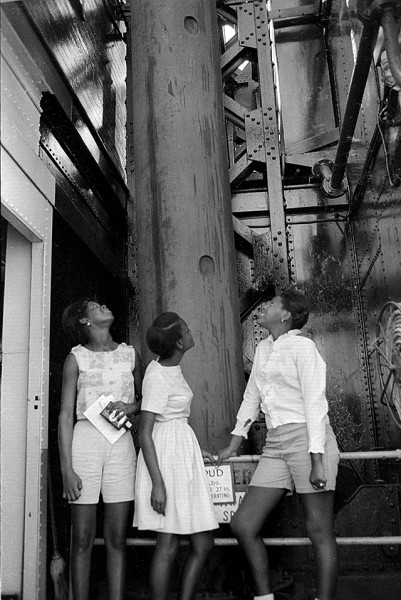 The institute argued that the boat was worth $775,000. Richard Wooten, a spokesman said that a number of groups were interested in preserving the boat. “After the Genny is raised, we intend to take her to Ft. Meyers, Fla., where the Ford Foundation and the Edison Foundation have placed $500,000 in their budget for a permanent berthing area for the vessel as a museum and educational center,” he told The Missourian.
The institute argued that the boat was worth $775,000. Richard Wooten, a spokesman said that a number of groups were interested in preserving the boat. “After the Genny is raised, we intend to take her to Ft. Meyers, Fla., where the Ford Foundation and the Edison Foundation have placed $500,000 in their budget for a permanent berthing area for the vessel as a museum and educational center,” he told The Missourian.
The sad end
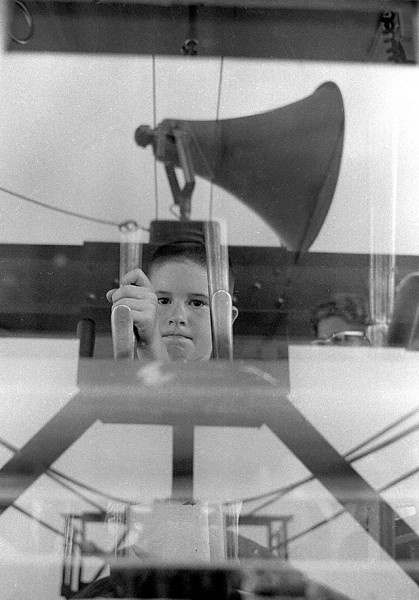 I don’t know what finally happened to the Genny, but based on photos I saw of its paddle wheels on the LittleRiverBooks website, I’m pretty sure she never made it to Ft. Meyers. Here is a photo showing only the stacks and pilot house sticking up out of the water. Dan Back photographed the stacks and pilothouse with the dry dock in the background; the stacks were removed eventually and sent off to be dismantled. During the high water, spring 1995, she was completely under water.
I don’t know what finally happened to the Genny, but based on photos I saw of its paddle wheels on the LittleRiverBooks website, I’m pretty sure she never made it to Ft. Meyers. Here is a photo showing only the stacks and pilot house sticking up out of the water. Dan Back photographed the stacks and pilothouse with the dry dock in the background; the stacks were removed eventually and sent off to be dismantled. During the high water, spring 1995, she was completely under water.
Here is a photo of the “recovery” effort. It’s the last mention of the Ste. Genevieve in The Missourian.
Ste. Genevieve photo gallery
Here’s a collection of all the photos I could find of the dredge’s visit to Cape Girardeau. They remind me a little of when I photographed the Delta Queen taking on passengers in Cairo in 1968. Click on any photo to make it larger, then click on the left or right side of the image to move through the gallery.
 I made a run downtown, but the place I needed to go was closed, so I took a stroll down to the riverfront. It was a perfect night. There was a guy sitting near the Broadway entrance to the floodwall playing a guitar. Next to him was a buddy with a huge boxer on a leash. He started to move him out of my way, but the dog was wagging his tail and I motioned him to stay put.
I made a run downtown, but the place I needed to go was closed, so I took a stroll down to the riverfront. It was a perfect night. There was a guy sitting near the Broadway entrance to the floodwall playing a guitar. Next to him was a buddy with a huge boxer on a leash. He started to move him out of my way, but the dog was wagging his tail and I motioned him to stay put.










